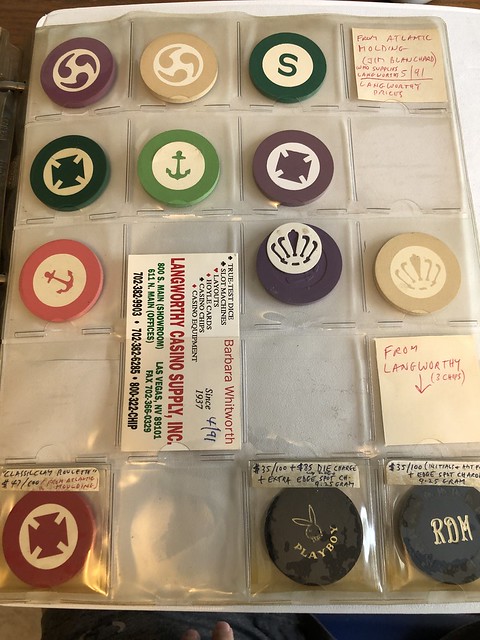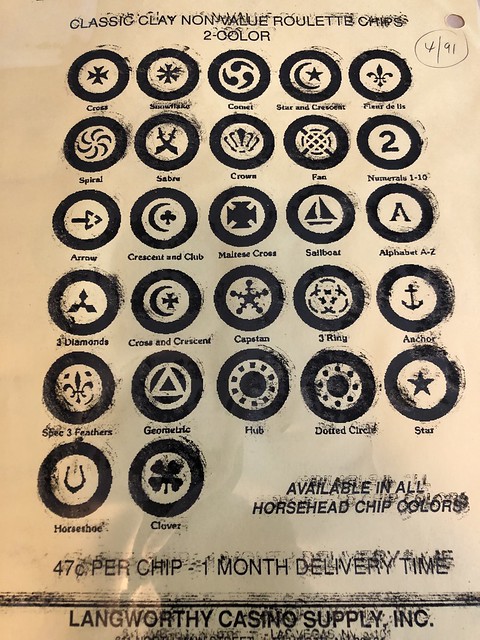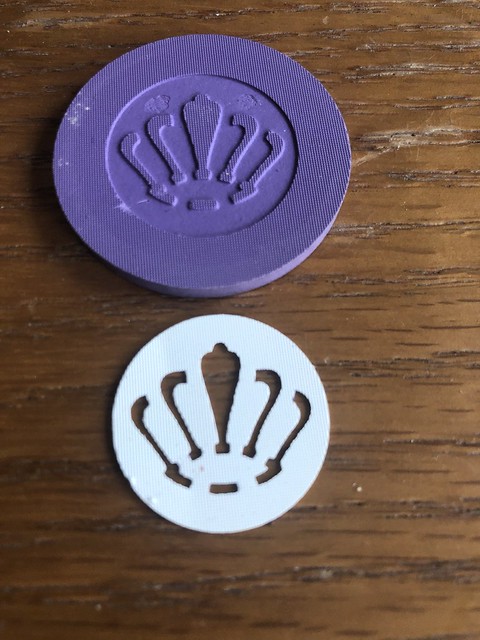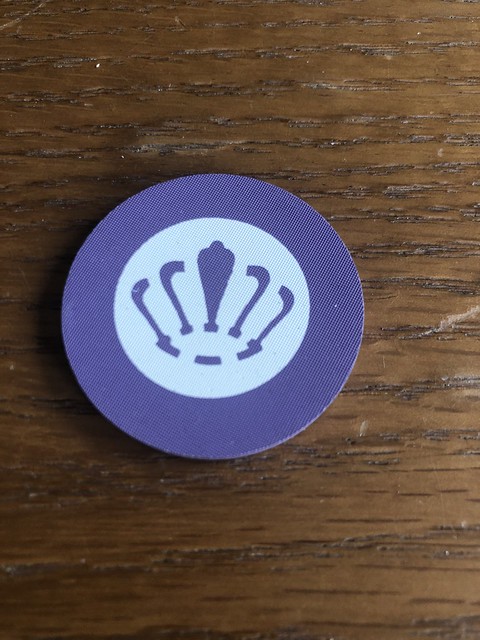Ran across a little more information regarding Paranoid chips / material, roulette inlaid chips, and other types of vintage chips. Check this out:
View attachment 533748
Source:
http://www.ccgtcc-ccn.com/ClayChips.pdf - That's from the Casino Chip and Gaming Tokens Collectors Club. The relevant observations are:
- "Paranoid" is definitely a material - "a fibrous composition that is tough and durable"
- "Composition chips" were a fairly common description of lots of different chips sold at the time, but in this particular instance, note that the inlaid roulette chips are described as Paranoid whereas the plain chips are described as composition chips. So this pretty strongly suggests that the two types of chips are made of two different types of materials, with Paranoid being reserved for the premium chips.
Probably both of them are composites of celluloid or a celluloid-like plastic (i.e. derived from cellulose, nitric acid, and camphor or similar subtances) plus clay, sand, or other minerals, plus a variety of other materials such as whatever makes Paranoid "fibrous". There weren't a lot of choices at that time for plastic-like, moldable, workable materials. But of the two, Paranoid was tougher and more expensive than the other.
The full article notes that at least in the early days TR King was reselling chips manufactured by USPCC using the TR King exclusive Crowns mold. USPCC was also marketing chips using the Paranoid label. I wouldn't be surprised if Paranoid was their own house name for the material, and the material itself may even have been unique and proprietary to USPCC.
This is also interesting:
View attachment 533764
From this we can see that TR King (via USPCC) offered molded, hotstamped chips that were also made from Paranoid. So it's not just plain-mold die-cut inlaid generic symbol chips that used this material, but also customized molded chips.
Even more interesting is that here we see the "speed chips" being offered that use a material with "extra weight". So that's three different types of chips on offer here: "composition", "Paranoid", and "extra weight" (plus the paper chips, but never mind that). I think we would recognize any of them as "clay" chips today - they're compression-molded, have inlays or hotstamps, and are made of a plastic composite with a substantial mineral content (presumably, but not certainly). We just need the inlays to be litho printed, and maybe some further improvements to the composite to make it heavier and tougher, and hey presto we're talking about real casino chips! Not quite there yet, but getting close.





